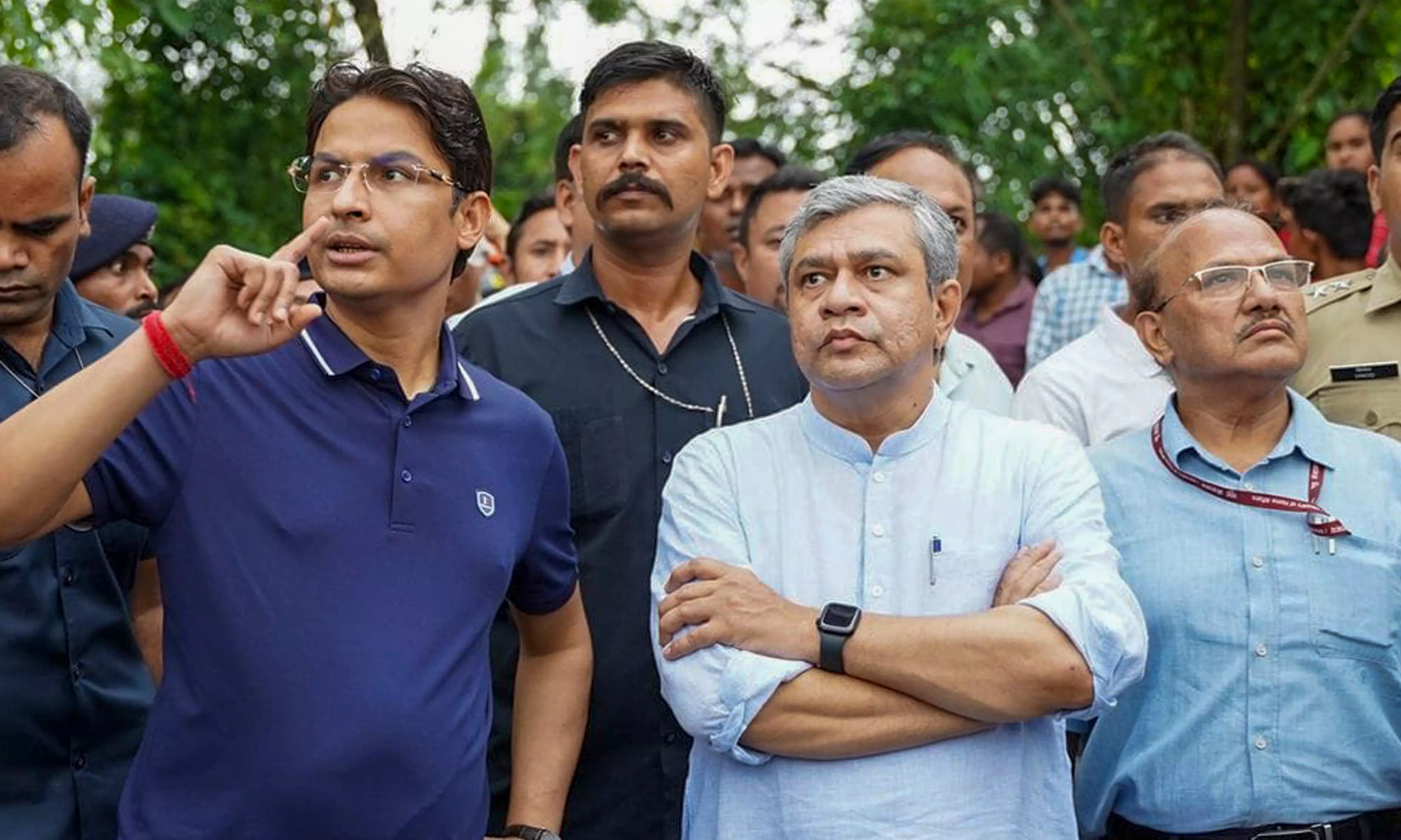
- Home
- India
- World
- Premium
- THE FEDERAL SPECIAL
- Analysis
- States
- Perspective
- Videos
- Sports
- Education
- Entertainment
- Elections
- Features
- Health
- Business
- Series
- In memoriam: Sheikh Mujibur Rahman
- Bishnoi's Men
- NEET TANGLE
- Economy Series
- Earth Day
- Kashmir’s Frozen Turbulence
- India@75
- The legend of Ramjanmabhoomi
- Liberalisation@30
- How to tame a dragon
- Celebrating biodiversity
- Farm Matters
- 50 days of solitude
- Bringing Migrants Home
- Budget 2020
- Jharkhand Votes
- The Federal Investigates
- The Federal Impact
- Vanishing Sand
- Gandhi @ 150
- Andhra Today
- Field report
- Operation Gulmarg
- Pandemic @1 Mn in India
- The Federal Year-End
- The Zero Year
- Science
- Brand studio
- Newsletter
- Elections 2024
- Events
- Home
- IndiaIndia
- World
- Analysis
- StatesStates
- PerspectivePerspective
- VideosVideos
- Sports
- Education
- Entertainment
- ElectionsElections
- Features
- Health
- BusinessBusiness
- Premium
- Loading...
Premium - Events

Railways has an estimated 2.74 lakh vacancies, of which 1.7 lakh are related to ensuring safety. Running an organisation with such a huge number of vacancies, especially in roles that underpin safety, is gross managerial failure
An accident that kills people is a tragedy. An avoidable accident that kills people is a crime that should penalise the offender whose negligence caused the accident.
When the negligent culprit of an avoidable accident that kills people turns up at the accident site to grandstand, that is a travesty. Railway Minister Ashwini Vaishnaw is a travesty of ministerial responsibility.
How fair is it to blame the Railway Minister for an accident that occurs anywhere along the 1,26,000 km-long railway track?
Failure to follow protocol
If the accident took place as the result of a natural disaster, an unnatural act of sabotage, or aberrant behaviour by a lone operator, the minister cannot really be held responsible.
In the accident that took place on June 17, when a goods train rammed into the rear of the Agartala-Sealdah Kanchanjunga Express, the basic fault was the failure of the automatic signalling system.
The protocol to be followed when the automatic signalling system fails is for the engine driver of every train to stop briefly at every intervening signal, move slowly, and keep repeating this stop-and-go combination till the stretch of dysfunctional signals is over.
The driver of the passenger train followed the protocol and his train was stationary, when the goods train came from behind and rammed the passenger train, because the goods train driver did not follow the protocol, and was neither moving slowly nor stopping intermittently, as required.
Organisational, budgetary failure
Signals should not fail; if they do, they should be repaired and restored to working condition in short order. The deficiency in this comes from organisational and budgetary failure.
The Railways have an indigenously-developed anti-collision system they are proud of, called Kavach. It covers only about 1 per cent of the Railways’ track length, however.
Sure, it costs money to deploy Kavach: about ₹0.5 crore per km of track. It would obviously be difficult for the Railways to deploy the anti-collision system at one go, both on financial grounds and grounds of being able to produce and procure the devices on the scale required.
That means sequencing the deployment right, and making trade-offs between spending money on signalling and safety, on the one hand, and new lines and new trains, on the other.
Glitz and glamour
This is where the present government slips up. Its focus is on glitz, glamour, fast trains, new trains, new lines, fancy new stations, and selfie points at stations with the Prime Minister’s cutouts.
Last June, in the wake of the Balasore accident in which one passenger train crashed into a stationary goods train, sending its bogies flying to the path of an oncoming, second passenger train, to create a second collision and yet more deaths, it had been reported that the Railways had more than 2.74 lakh vacancies. Of this, 1.7 lakh were related to ensuring safety.
Running an organisation with such a huge number of vacancies, especially in roles that underpin safety, is gross managerial failure.
Right priorities
The Minister for Railways is ultimately responsible for such failure. Riding on motorbikes in a show of dutiful enthusiasm to reach the site of the accident will not wash away that responsibility.
The Railways have focussed on showcasing their Vande Bharat trains. These are trains for the Railways to be proud of, even if they almost got junked and the team that developed the prototype, dubbed Train 18, was subjected to harassment and baseless charges of impropriety.
But that does not mean that the Railways should divert funds and energies from investment in signalling, safety, and maintenance to have as many Vande Bharat trains as possible. That unplanned hurry in deploying these newfangled trains has resulted in many of them getting delayed, and starving the non-glamorous part of the railways of essential funds.
Debt burden
Railway veterans talk of a disquieting cultural erosion in the railways. Change is inevitable, but bringing about change must improve organisational morale, not dispirit the team.
The Railways today spend more than they generate as revenue. In the jargon of the railways, the Operating Ratio is a key measure of financial health – the ratio of expenditure to revenues. A ratio below 80 would be somewhat healthy, but it has been running at more than 100 per cent of late.
Yet, the Railways are being plied with loans to undertake investments that would boost the overall capital expenditure in the economy, particularly, state-funded capital expenditure. This is deemed necessary to keep growth buoyant.
However, it places a steep debt-servicing obligation on the Railways. And revenues do not go up in proportion to meet that debt-servicing obligation.
Freight revenues
If the Railways are to generate significantly more revenue, they must carry more of India’s overall freight. That would call for coordinated multimodal transport — moving things by rail between major centres that are connected by rail and then moving things by road to the final destination, from the nearest railway station where the cargo has reached. It also means running freight trains as per a fixed schedule, something that has remained talk for a long time.
While money is being spent by the Railways, it is not being spent on the things that will persuade people to move more of their freight by rail. For this, too, there is no one but the Railway Minister to hold to account.
The next general elections are five years away. Glitz and glamour can wait. It is time to invest in the nuts and bolts of the Railways that make things more safe, predictable, and efficient.
That means less of motorbike rides in front of TV cameras, and more focussed work behind the desk at Rail Bhavan.
(The Federal seeks to present views and opinions from all sides of the spectrum. The information, ideas, or opinions in the articles are of the author and do not necessarily reflect the views of the Federal.)


